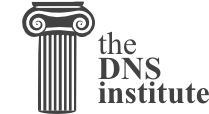DNSSEC, like many things in this world, is not without its
own problems. Below are a few challenges and disadvantages that DNSSEC faces.
- Increased, well, everything: With DNSSEC,
signed zones are larger, thus taking up more disk space; for DNSSEC-aware
servers, the additional cryptographic computation usually results in
increased system load; and the network packets are bigger, possibly putting
more strains on the network infrastructure.
- Different security considerations: DNSSEC
addresses many security concerns, most notably cache poisoning. But at the
same time, it may introduce a set of different security considerations,
such as amplification attack and zone enumeration through NSEC. These new
concerns are still being identified and addressed by the Internet
community.
- More complexity: If you have read this far,
you probably already concluded this yourself. With additional resource
records, keys, signatures, rotations, DNSSEC adds a lot more moving pieces
on top of the existing DNS machine. The job of the DNS administrator
changes, as DNS becomes the new secure repository of everything from spam
avoidance to encryption keys, and the amount of work involved to
troubleshoot a DNS-related issue becomes more challenging.
- Increased fragility: The increased complexity
means more opportunities for things to go wrong. In the absence of DNSSEC,
DNS was essentially "add something to the zone and forget". With DNSSEC,
each new component - re-signing, key rollover, interaction with parent
zone, key management - adds more scope for error. It is entirely possible
that the failure to validate a name is down to errors on the part of one or
more zone operators rather than the result of a deliberate attack on the
DNS.
- New maintenance tasks: Even if your new
secure DNS infrastructure runs without any hiccups or security breaches, it
still requires regular attention, from re-signing to key rollovers. While
most of these can be automated, some of the tasks, such as KSK rollover,
remain manual for the time being.
- Not enough people are using it today: while
it's estimated as of late 2016, that roughly 28% of the global Internet DNS
traffic is validating
, that doesn't mean that many of the DNS zones are
actually signed. What this means is, if you signed your company's zone
today, only less than 30% of the Internet users are taking advantage of
this extra security. It gets worse: with less than 1% of the .com domains
signed, if you enabled DNSSEC validation today, it's not likely to buy you
or your users a whole lot more protection until these popular domains
names decide to sign their zones.
The last point may have more impact than you realize. Consider
this: HTTP and HTTPS traffic make up majority of the web. While you may
have secured your DNS infrastructure through DNSSEC, if your web hosting
is outsourced to a third party that does not yet support DNSSEC in their
own domain, or if your web page loads contents and components from
insecure domains, the end users may experience validation problems when
trying to access your web page. For example, although I may have signed
the zone isc.org, but my web address
www.isc.org is actually a CNAME to
96d719dc5612761de516fc.random-cloud-provider.com. As long
as random-cloud-provider.com remains an insecure DNS zone,
users cannot fully validate everything when they visit my web page and
could be redirected elsewhere by a cache poisoning attack.
